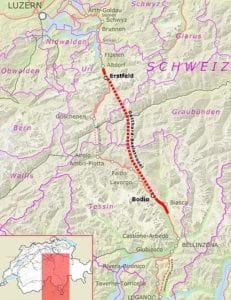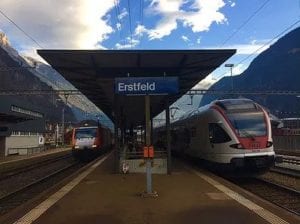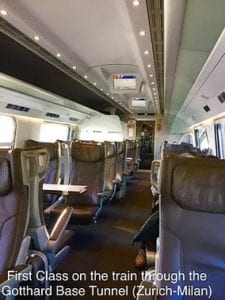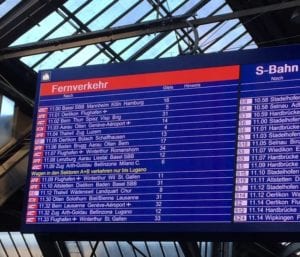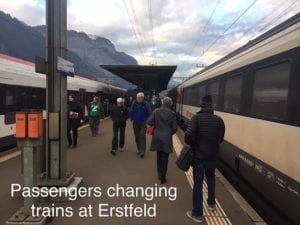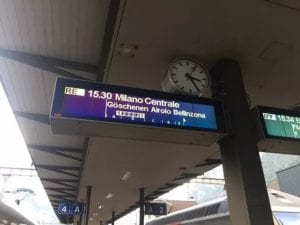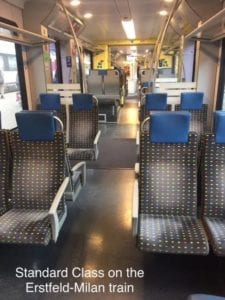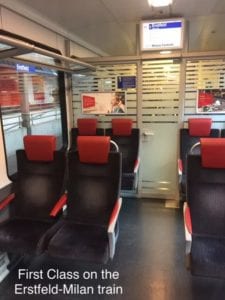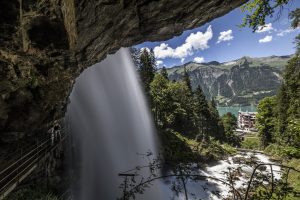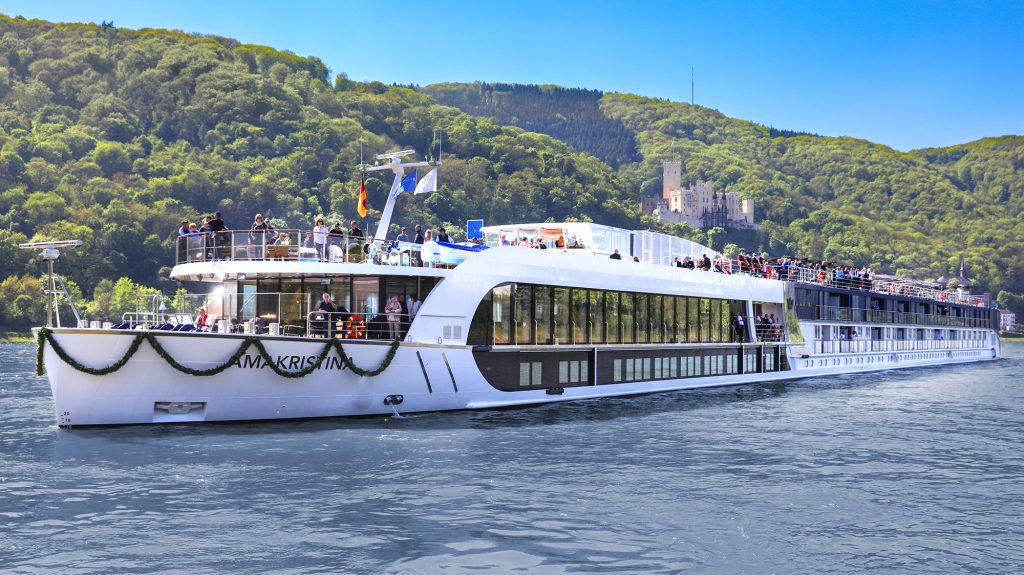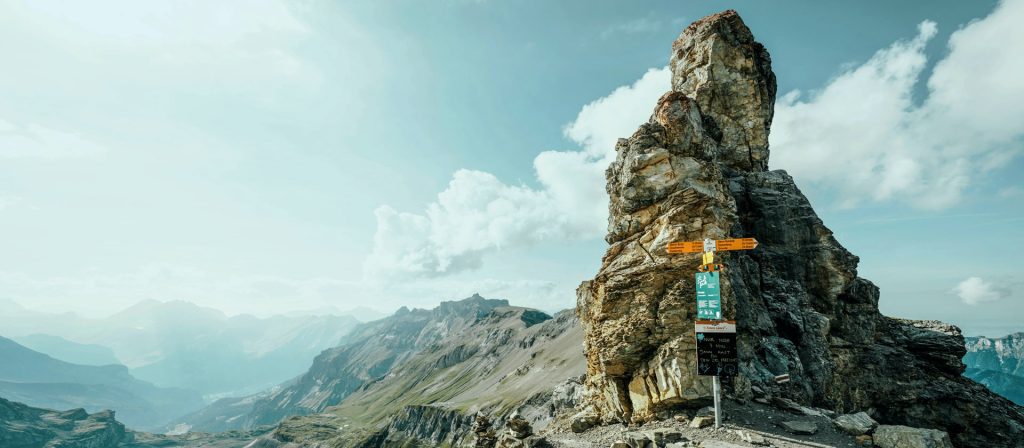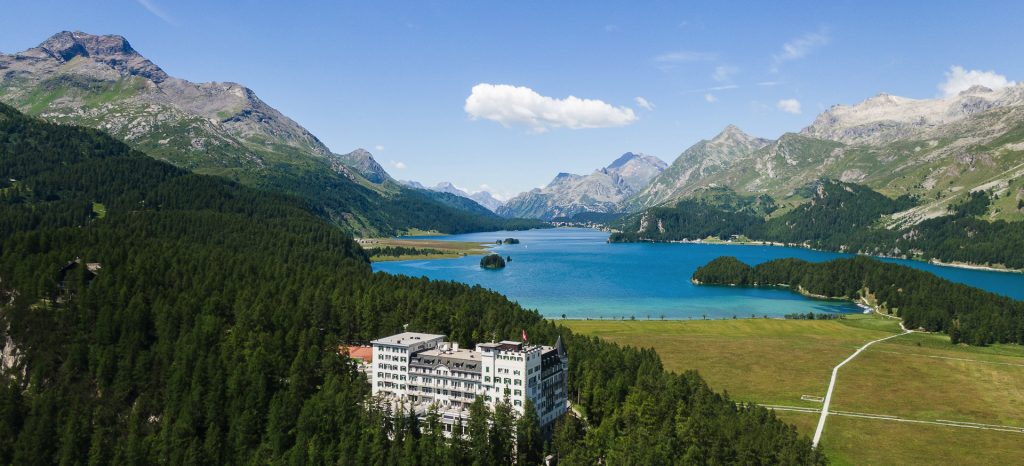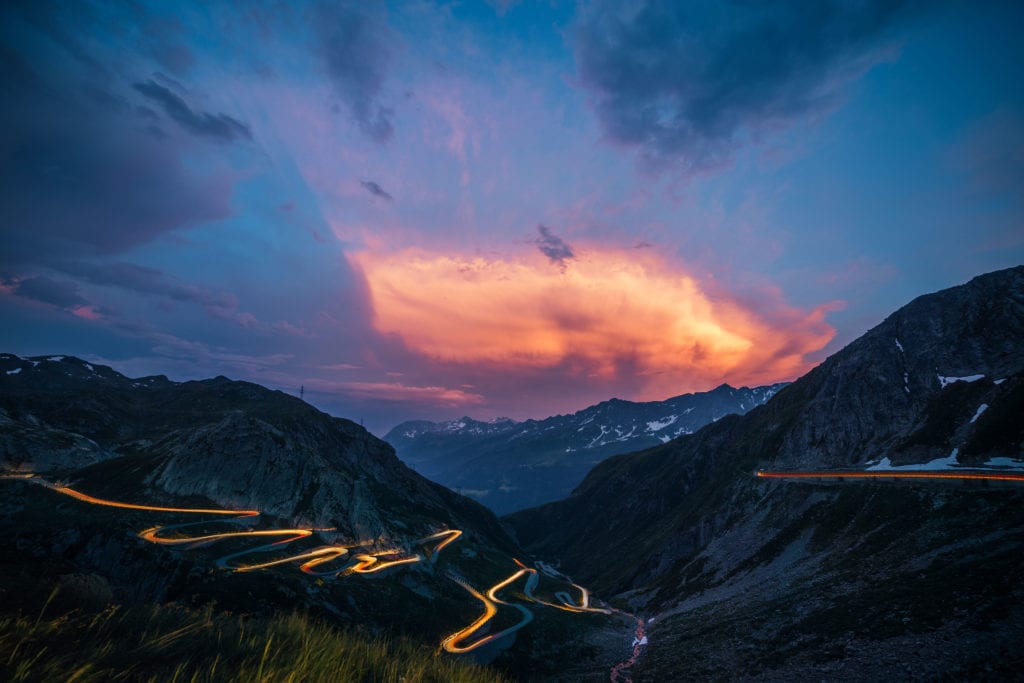
Gotthard Pass: The Old and the New
On Sunday 11 December 2016, the Gotthard Base Tunnel finally opened, after 17 years of boring work through the stubborn rock of the high Alps and over £9 billion of expenditure. The tunnel shaves an hour off travel time between northern and southern Europe, although the flipside is that it cuts out an element of the scenery on this spectacular Alpine route. On the first two days of the tunnel being open for passenger rail traffic, I decided to try out the “new way of travelling the old route” (Zurich to Erstfeld, then Erstfeld over the Gotthard Pass) as well as the Base Tunnel itself to see the difference in scenery, service, convenience and overall experience.
“Over the top” – Travelling the classic Gotthard route from north to south
The first crucial factor to mention is that there is only one train daily that runs from north of the Gotthard (i.e. in German-speaking Switzerland), all the way through into Italy. This leaves from Erstfeld, a small town on the approach to the spectacular pass, at 15:30 each day. I therefore took a train from Zurich in the early afternoon, passing by the important junction station of Arth-Goldau (where you can connect from Lucerne) and briefly alongside the shoreline of Lake Lucerne before terminating at Erstfeld. This unassuming station with only 3 platforms has today become a crucial staging-point in those wanting to take the classic route to reach southern Switzerland and Italy. I needn’t have worried – my train from Zurich pulled in bang on time, right alongside the modern Italian train showing “Milano Centrale” as the destination. A 6-minute connection was more than comfortable, although I noticed a couple of bistros and cafes just opposite the station where one could pass the time if a longer connection was unavoidable (or indeed desired!).
The train from Erstfeld to Milan is a collaboration between the railways of the Lombardy region of Italy and the Ticino region of Switzerland. It is super-modern with spacious seating in both classes of travel. First Class was very quiet and Standard not especially busy, but this is December well before Christmas, not exactly the height of the season. Seating is non-reservable, just take a seat wherever you like, which is never likely to be an issue when boarding at the origin station. One thing to note is that there are no catering facilities on board, as this is classified as a regional train, to plan ahead and bring a picnic or supplies if you think you might get hungry!
On leaving Erstfeld, the train gradually climbs through the mountains on tracks that were first laid in the 1880s heading up to the small station of Göschenen, the northern entrance to the original Gotthard Tunnel, which you subsequently travel through for around 10 minutes. After this brief period of darkness, you emerge into Italian-speaking Switzerland. Still very much Switzerland, but its Italian language gives it an instantly more southern European feel. The train continues through the stunning scenery of this beautiful canton of Ticino, with views abounding on both sides of the train. It does stop regularly (more regularly than the previous Zurich-Milan direct trains on this route would have done) but it gives you more chance to take in the new linguistic environment and enjoy the ride as you twist and turn while descending down towards the capital of the canton, Bellinzona. Around 40 minutes after emerging from the Gotthard Tunnel (1882 version), we are joined by the high-speed line to the Gotthard Tunnel (2016 version) at its southern entrance. As the high-speed line marries up with the classic route, it heads south towards Bellinzona, Lugano and Italy.
The Gotthard Base Tunnel route
Departing on the 11:09 from Zurich HB on the second day of the tunnel’s operation, I was surprised to see Italian rolling stock for this EuroCity departure. Trenitalia’s Frecciargento (Silver Arrow) forms the full set. With the rear coaches set to be decoupled at Lugano, I boarded my First Class carriage in the front portion of the train, going right the way through to Milan.
Lovely spacious seating and ample luggage storage was what I have come to expect and duly found on this piece of Italy in Switzerland. I settled into my seat on a table for 2 ready for what is all set to be scenic trip south, punctuated by the 35-mile tunnel that has been so long in the making.
The train first runs alongside Lake Zurich and in and out of various small tunnels, calling at the aptly-named town of Zug, before making its way to the entrance of the new tunnel.
The scenery is of course exactly the same as the Classic Route at this point, with rolling hills giving way to the more dramatic peaks and looming valleys of the high Alps. However, it is these very mountains that have been the barrier to fast connections between the north and the south of Europe for so many centuries, until now.
We disappear into the tunnel, and the train picks up substantial speed, whisking us efficiently into the Italian-speaking canton of Ticino in 20 minutes.
As we emerge near the town of Biasca and rejoin the Classic line, the scenery is even more spectacular. Yes, we might have missed out on the “loop-the-loop” fun and games that the Classic Route performs after exiting on the southern side, but we have shaved an hour off the journey and we still have so much more scenery to enjoy on the way to Milan.
Which route should I take?
This is very much horses for courses. If you don’t mind a change of train, are happy to take your own food & drink supplies and have more time, then the Classic Route could be an option for you. If you just want to get from Zurich to Italy as quickly and efficiently as possible, then the tunnel is an enhanced way of getting to your destination while still having a good deal of scenery on both the north and south sides.
IMAGES OF THE DAY


